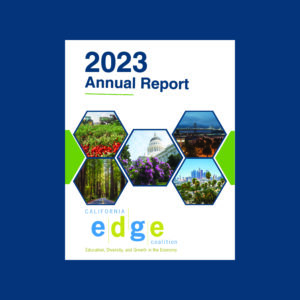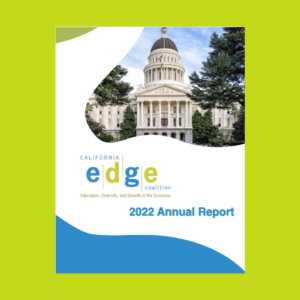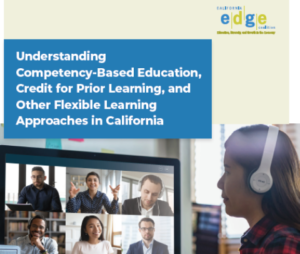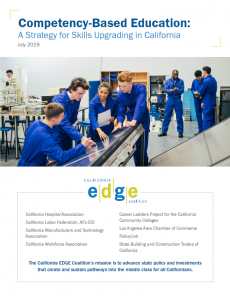
2023 Annual Report
Dear colleagues, partners, and friends, I am delighted to present the CA EDGE Coalition’s 2023 Annual Report, highlighting the remarkable accomplishments we’ve achieved in the
The mission of the Economic and Workforce Development (EWD) program is to advance California’s growth and global competitiveness through high quality education and services focusing on continuous workforce improvement, technology deployment and business development consistent with the needs of the state’s regional economies.
This installment of the Workforce Brief Series titled “Economic and Workforce Development” describes the localized programs, and their varied strategies and funding streams, which seek to bring economic prosperity to every region in California. To learn more, download the full text of the article here.
Industry Driven Regional Collaborative projects ($3.8 million) provide short-term grants to local colleges to respond to emerging education and training needs of regional employers.
Regional Resource Center projects ($11.2 million) provide long-term delivery and capacity development infrastructure for community colleges.
Responsive Incumbent Worker Training projects ($3.9 million) provide grants to colleges for either (a) expanding the delivery of performance improvement training to employers and incumbent workers in high growth industries or (b) developing programs that integrate basic skills and career technical education curriculum to help students transition into high technology and high demand job sectors.
Job Development Incentive Training projects ($2.2 million) provide training to employers that incorporates job creation for unemployed, under-employed low-income workers, and public assistance recipients.

Industry Driven Regional Collaborative Projects
Regional Resource Center Projects
Responsive Incumbent Worker Training Projects
Job Development Incentive Training Projects
California workers earning less then $13.63 per hour
The Chancellor’s Office is required to submit an annual report each spring to the Governor and Legislature that includes information on expenditures disaggregated by industry clusters and regions.
The EWD program serves students, employers, and colleges. According to the 2008J09 Annual Report, of the participants who received training 29 percent were current employees of regional businesses, 47 percent were entrepreneurs, and 24 percent were students.

Dear colleagues, partners, and friends, I am delighted to present the CA EDGE Coalition’s 2023 Annual Report, highlighting the remarkable accomplishments we’ve achieved in the

Dear Friends, California has a staggering number of unfilled good jobs and an incredible pool of talent living in poverty or below a living wage.

EDGE recently partnered with the California Association of Alcohol and Drug Program Executives (CAADPE) to publish a new report, Identifying Barriers to Employment After Substance

Dear Friend, I’m excited to bring you the first annual State of the California EDGE Coalition Report intended to provide you with an overview of our successes

Postsecondary credential attainment is a primary path to economic and social mobility. However, more than 5.5 million Californian adults have some college but no degree and are no longer enrolled. For millions more who are juggling personal and work responsibilities, fitting college into an already hectic life seems impossible.

. A new policy brief released by the California EDGE Coalition examines the ways in which other states are now successfully employing competency-based approaches to teaching and learning which allow students to move flexibly – and often much more quickly – through an educational program that is designed to make sure they know and can do what is expected of graduates.